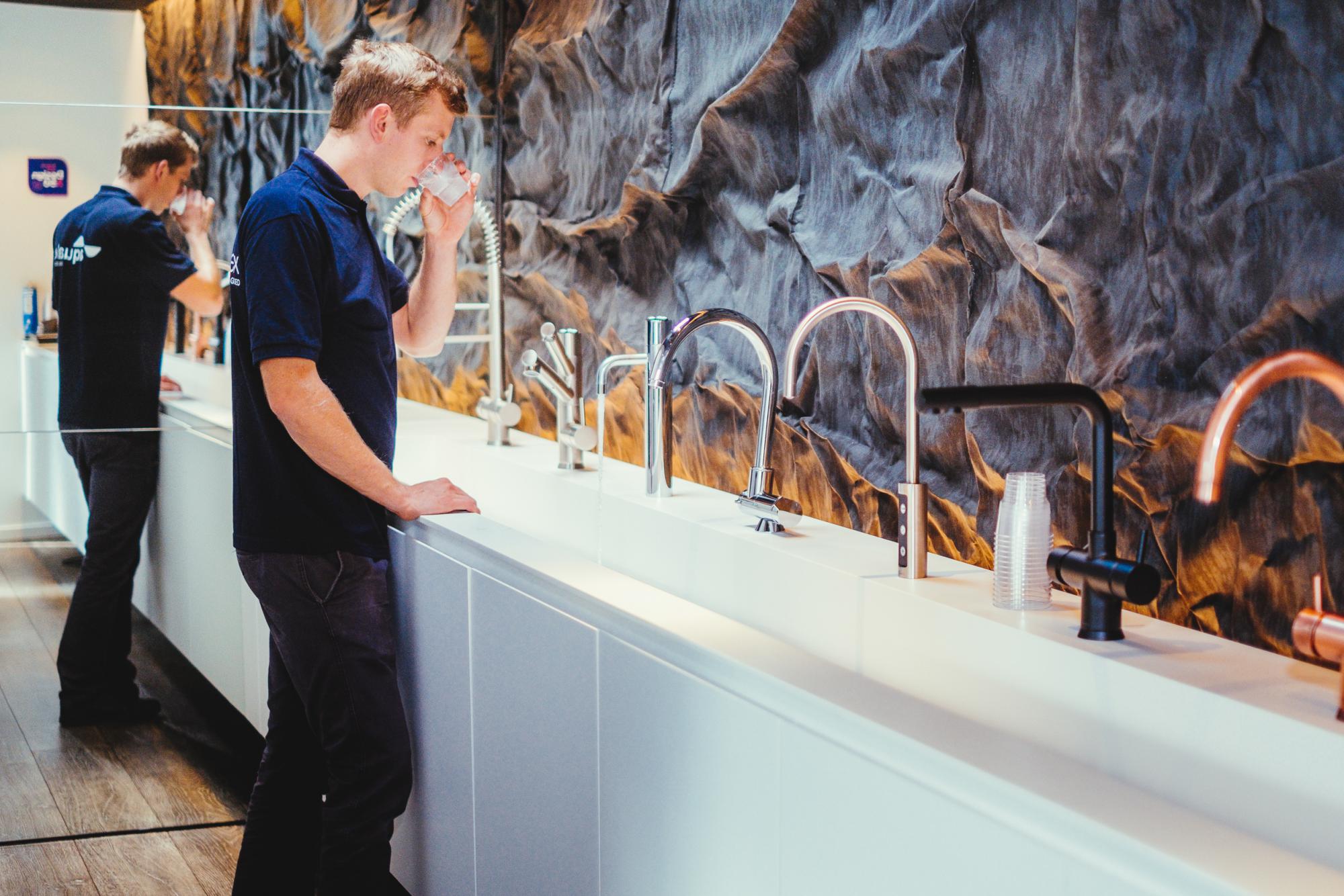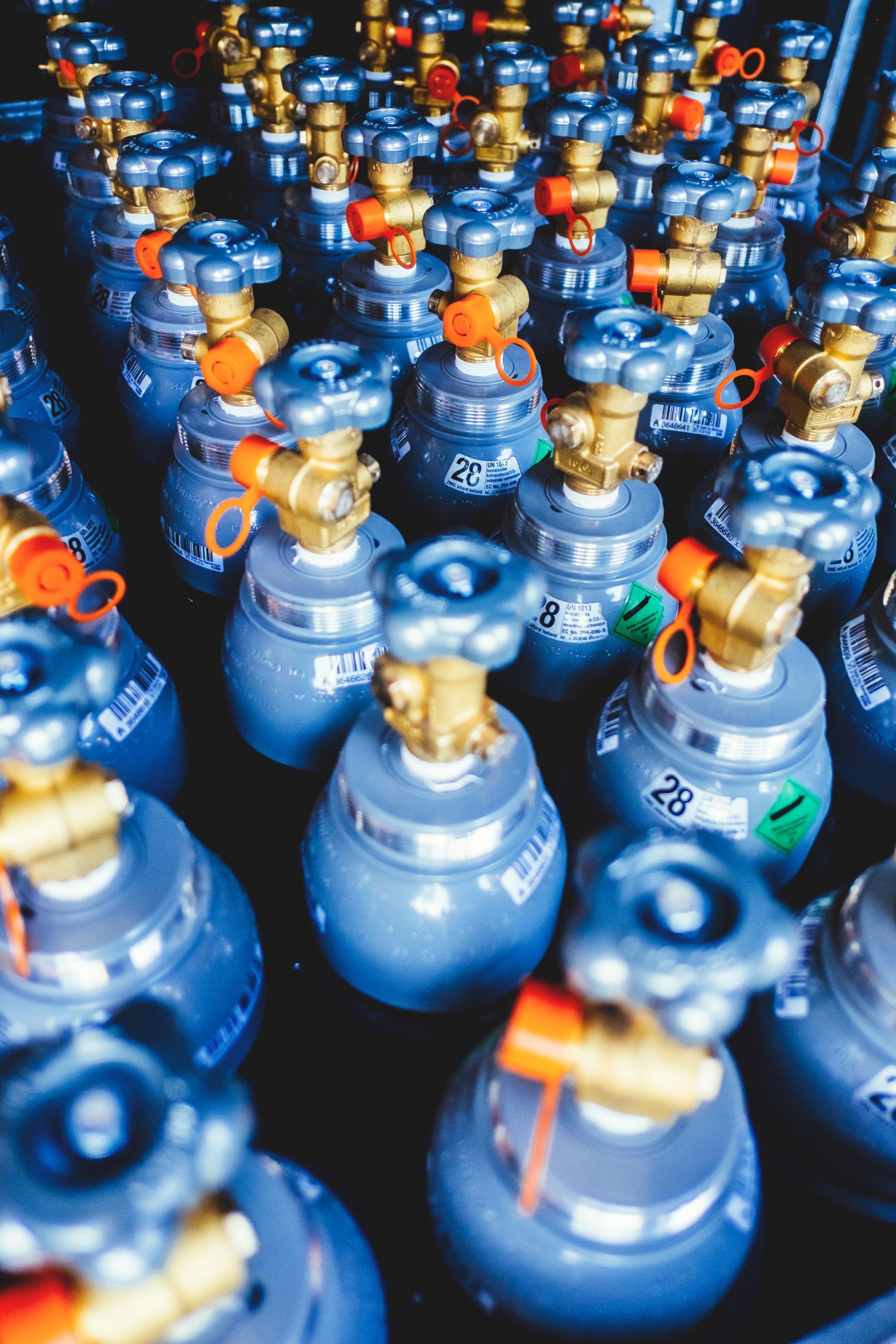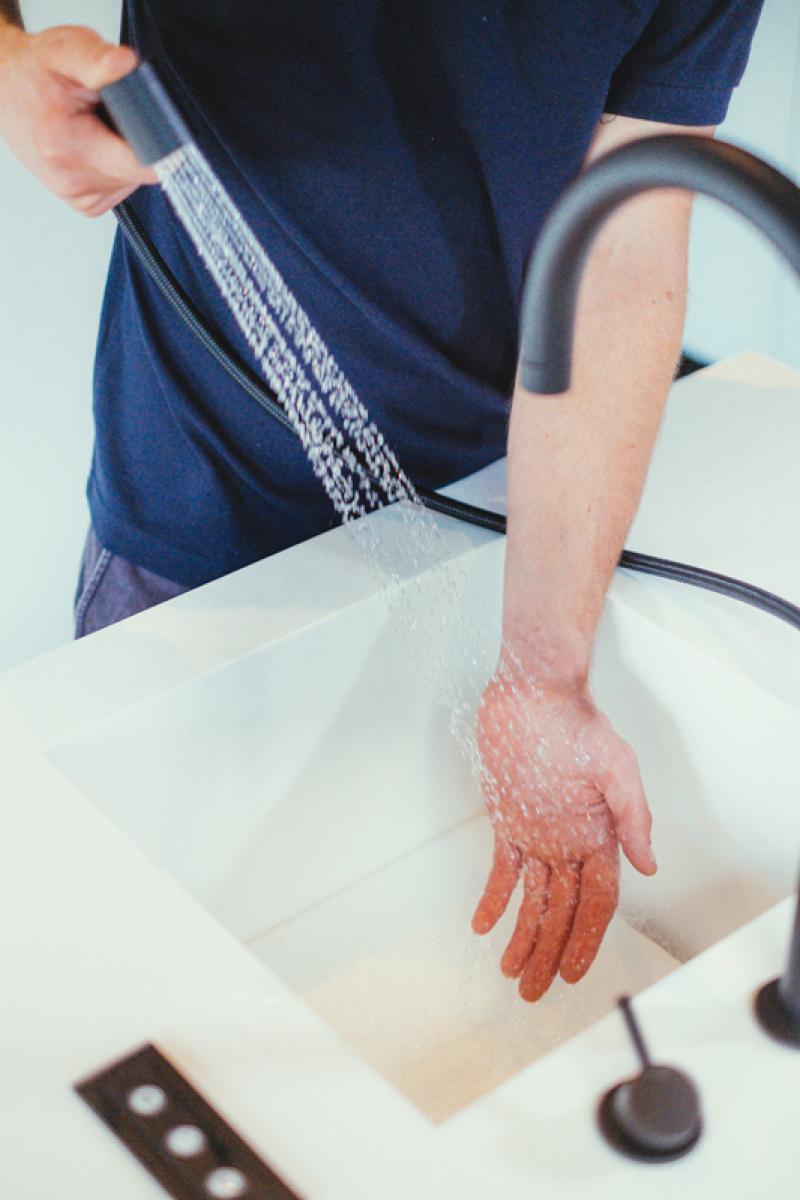A reduced ecological footprint thanks to tap water
Only 3% of all the water that Belgians drink comes from the tap. In 2017 no less than one and a half billion litres of bottled water were consumed in Belgium, 17% more than 5 years earlier. However, tap water is much better for the environment than bottled water. After all, tap water is not packaged and not transported by road.
Studies show that emissions resulting from the production of bottled water are 300 times higher than those from tap water. In Europe, bottled water is responsible for 17.6 million tonnes of CO2 emissions per year. In our country, this would amount to 40 000 tonnes per year, which is equivalent to the emissions of 14 000 cars driving 15 000 kilometres and 185 g/km in one year. CO2 emissions - 5,000 times the earth's circumference!
On behalf of the Dutch Consumers' Association, in 2005 the Pré research bureau compared tap water and bottled water with regard to greenhouse gases.
Every year, 2.5% of global oil production is used for the production of 2.7 million tonnes of plastic bottles. In the United States alone, the total amount of oil needed to do this is equivalent to refuelling 1 million cars.
Huge mountain of waste
Bottle water also contributes to the enormous waste mountain. In Belgium, we use 1.2 billion PET bottles every year. In the United States, 1,500 plastic bottles end up in the trash every second. And yet, throughout the world, only 20% of PET bottles are recycled.
The other bottles end up in incinerators, which again generates extra CO2 emissions, or end up in the sea. According to marine biologist Richard Thompson of the International Marine Litter Research Unit, the number of plastic bottles that end up in the oceans is so high that chemical traces, 'microplastics', are almost always found in seawater samples. The plastic soup in the Pacific Ocean, also known as the 'Great Pacific Garbage Patch', continues to grow: the island of plastic is now 60 times bigger than Belgium.

A short calculation
Imagine: you buy an AQUALEX tap water cooler or a multifunctional design tap. How do you contribute to the environment? Well, an average family causes 43 kilograms of CO2 emissions every year through its total tap water consumption. For bottled water this is 300 times as much. Per sold tap water cooler.
This is how AQUALEX reduces CO2 emissions by more than 12,000 kilos per year per family.
Let's also calculate how many trucks we remove from our roads. An average Belgian consumes 130 litres of bottled water every year. If you completely switch to tap water at home, that means that (for a family of 4) you consume 520 litres of tap water per year instead of bottled water. Assuming a lifespan of 10 years per AQUALEX device, this means that you use 5,200 litres of tap water. One pallet holds 672 bottles (14 rows on 4 layers on 12 bottles). 672 bottles of one and a half litres are good for 1,008 litres per pallet. A fully loaded truck contains 26 block pallets. This results in a total of 26,208 litres of bottled water per truck. So, for every 5 devices it sells, AQUALEX takes one truck off the road! And assuming an office environment where 20 people drink tap water (good for 2,600 litres per device per year), one sold device is enough to have one less truck on our roads.
Sources
Alex van der Helm, Folia, Research bureau Pré, S. Botto, Ocean Cleanup Foundation, Oasen, VIWF, VMM
87
Number of plastic bottles (1.5L) saved per year per device sold per person
An average person consumes 130 litres of bottled water each year. That is the equivalent of 87 bottles (1.5L).
300
300 times more CO₂ emissions from bottled water
The production, packaging and transport of packaged drinking water causes 300 times more CO₂ emissions than the same quantity of tap water.
Tap Water vs. Bottled Water in a Footprint Integrated Approach | Nature Precedings
1
Save with your team 1 tonne of CO2 per year by drinking from an AQUALEX appliance.
An average person consumes 130 litres of bottled water every year. If you and your team of 40 colleagues switch to an AQUALEX appliance, that means a saving of 5,200 litres of bottled water a year. According to a reputable study published in Nature, a one-and-a-half litre bottle of spring water has a CO2 footprint of 260g CO2 eq. So you and your team will save a small tonne of CO2 every year.
Tap Water vs. Bottled Water in a Footprint Integrated Approach | Nature Precedings

